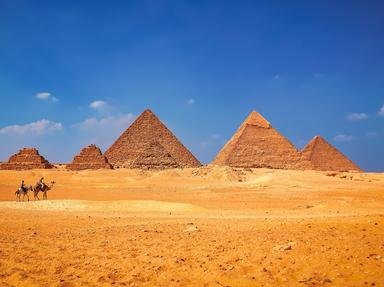Quiz Answer Key and Fun Facts
1. Pharaoh was a king who ruled ancient Egypt, usually after inheriting the throne. What is this type of government called?
2. The government of ancient Egypt could also be described as being a theocracy. What other job did pharaoh perform in this type of government?
3. There had to have been a fairly large group of government officials that carried out the orders of pharaoh in ancient Egypt. What would this body of non-elected officials be called?
4. Who was the chief government official after pharaoh in ancient Egypt?
5. Ancient Egypt was divided into political districts, some of which dated back to the Predynastic Period. What were the political districts called?
6. Ancient Egypt was ruled by a series of members from the same family. What is this type of government sequence called?
7. Many times when pharaoh appeared in public, in addition to the crook and flail he also carried a scepter, like the one to the right in the picture. What was the scepter called?
8. Which of the following ancient Egyptian deities is also associated with a crook and flail?
9. Although there are differing theories, the crook and flail seem to be associated with which activity in ancient Egypt?
10. The pharaoh was the only official in ancient Egypt who was allowed to carry a crook and flail.
Source: Author
ponycargirl
This quiz was reviewed by FunTrivia editor
gtho4 before going online.
Any errors found in FunTrivia content are routinely corrected through our feedback system.


